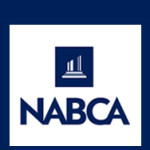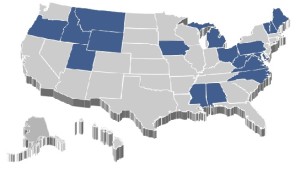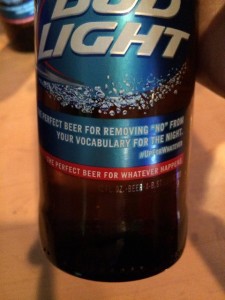A close look at an important segment of the alcohol industry
 The National Alcohol Beverage Control Association (NABCA) is the national association representing the Control State Systems – those jurisdictions that directly control the distribution and sale of beverage alcohol within their borders. There are 17 member jurisdictions, 16 states and Montgomery Co, Maryland and they control 24% of US spirits volume.
The National Alcohol Beverage Control Association (NABCA) is the national association representing the Control State Systems – those jurisdictions that directly control the distribution and sale of beverage alcohol within their borders. There are 17 member jurisdictions, 16 states and Montgomery Co, Maryland and they control 24% of US spirits volume.
Additionally, there are municipalities in Minnesota and South Dakota that act as retailers and there are three other smaller

counties in Maryland that are also considered control jurisdictions.
Last week NABCA held it’s 78th annual conference.
In some states, liquor stores are state-run and basically in the retail business (e.g., Alabama, Mississippi, Pennsylvania, Utah, New Hampshire). In many, the states are the “wholesaler” and appoint agents (private businesses) to run the retail business (e.g., Maine, Ohio, Vermont). There are a number of other variations but the common denominator is that the state government in these jurisdictions is in the alcohol business.
Until a few years ago there were 18, then the State of Washington voted to privatize and that’s where our story begins.
What has been the result in Washington?
I recently spoke to a friend in Seattle and asked him what changes have resulted from privatizing the liquor business. My friend’s politics are such that I wasn’t surprised by his response that “government doesn’t belong in private enterprise.” I next asked him what happened to the prices of spirits in his state. He said he wasn’t sure and thought they went up. Then revealed that he buys his liquor in Oregon (a Control State) because it’s much cheaper.
In fact, according to an article in The Seattle Times last June:
Many saw privatization as a win for business, government and the public… The state would get more revenue from newly imposed fees. And consumers would get cheaper, more widely available booze.
Well, most of that happened: A nearly $1 billion business is in private hands, the state has enjoyed a short-term revenue windfall, and liquor is ubiquitous. But on average it’s not cheaper, and certainly not perceived as such.
KREM TV in a story earlier this year reported that the state now has the highest prices in the country.
In Washington, a gallon of alcohol costs about $35. Compare that to two years ago when it cost $27 before it was privatized. Washington’s liquor prices are currently the highest in the country and cost $25 more than what it would cost just a few miles away in Idaho.
The winner in Washington is Costco, not the consumer. Unless of course, you want to buy one of their limited selection brands in gigundous sizes.
Control State confusion
Over the years, I’ve always felt that misconceptions abounded when it came to attitudes toward the control states. So I check with two former Seagram colleagues about the system. One was Steve Bellini, EVP Business Intelligence/Trade Development at Sidney Frank Import Co. and my former (and last) boss at Seagram. The other was Gregg Mineo, a Seagram and Absolut alumni and currently Director, Maine Bureau of Alcohol Beverages and Lottery Operations.
Both confirmed my view of the past. Once upon a time, the control states were run by political appointees whose knowledge of business in general and the spirits industry in particular was minimal. Gregg and Steve agree that the situation has appreciably changed. If it was ever true in the first place.
Further, suppliers (other than Seagram I might add) did not understand the control state structure and how to operate in that world. Everyone knew how to go to a distributor and beat him over the head but presenting to a control state board was uncharted waters for most.
Besides – and here comes my jaded perspective – when you need to make a “number” you can poke your finger in a wholesaler’s chest but can’t do that with a commissioner or director. You can load a wholesaler with merchandise if you have the clout; you can’t do that with a control state.
By the way, I just read this in Wine and Spirits Daily…
Control States represent 45% of Diageo’s group earnings before interest, tax (EBIT), per Morgan Stanley.
Why I love control states

When I ran market research, I always felt that the data provided by NABCA was the most accurate snapshot of consumer behavior or ‘takeaway.’ DISCUS numbers were important but dealt with sales to wholesalers. Nielsen data is consumer driven but is limited to 10% of the market and extrapolated for a holistic view.
As a result, when I ran new products, I always wanted a control state market as part of my test markets because I felt that the feedback would be more indicative of the product’s potential. Further, I was able to more easily determine the impact of programming and strategy with the information I received.
Today, I’m happy about the control states system because they provide easier entry points for smaller brands (think craft and other startups) and these brands are likely to be given a fair chance to get off the ground if there’s a reasonable amount of support by the supplier. Not to mention giving consumers a wide range of choices.
So, there are many reasons to be a fan of the control state system.
Meet Jim Sgueo
Mr. Sgueo is the President and CEO of NABCA and has been with the association for over 40 years and served in various capacities including, Systems Analyst, Director of Statistical Operations and Deputy Director. When you ask Steve Bellini about him, be prepared for a long, glowing series of comments such as “He is one of the industry’s unsung heroes… Humble but extremely knowledgeable and a real driver behind moving the control states forward.”
Gregg Mineo is no less effusive. He cites example after example of how, under Jim’s leadership, the association has become more sophisticated and more effective in providing information and education to its members.

I spoke to Jim and was not surprised to learn that he has indeed been at the forefront of change. He points out that in the distant past, state commissioners might have been political appointees without strong business skills. Since the 1980s, Governors have appointed directors and commissioners with general and alcohol business experience. Many of these directors have transformed their agencies and implemented 21st century business practices. This is the new generation of control state leadership that NABCA is geared to.
Here’s the part I like the most…
Those data resources I mentioned? The proceeds of the sale of that information go back to its membership in the form of education grants, research, the conference and other activities.
I don’t know about you, but I don’t know many associations that use the proceeds from selling information to fund activities.
Despite his many years at NABCA, Jim Sgueo strikes me as a man that doesn’t rest on his laurels and is open to change and adaptation.
I know many business executives that could use those attributes. So the next time you hear discussion about privatizing a control state because government ‘intervention’ in the market is wrong, just tell them to look at Washington. And, to realize that control states are moving more and more to balancing commercial interests with their regulatory role.

